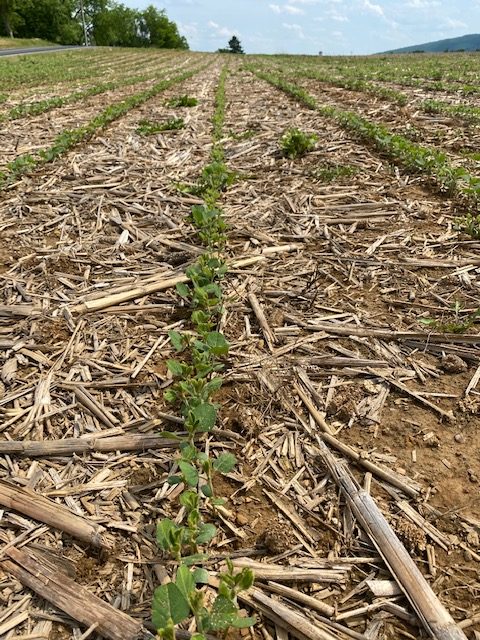Each morning as the sun is beginning its climb to the center of the sky, I make my way around “the block” of our neighborhood. Some days I walk, but most days I do something that, for someone in their 7th decade, almost counts as running. It’s really more of a saunter, but in the end, I am sweaty- so I figure its doing me a modicum of good.
I make my way alongside the cornfields and listen to music, I listen to God’s word for me that day, and I enjoy the state of physical exertion that makes it hard to think on purpose about anything; it is a period of mental and spiritual cleansing in which thoughts come and go.
Every once in a while, though, I get stopped dead in my tracks. That’s got to be the work of the Holy Spirit. I get an image in my head or I come across something that speaks to me- and I know that there is a message for me in it, somewhere. And then, as I move along, the idea develops.
This morning, it was this:
I finished climbing up a hill and there, on my left, was my neighbor’s beautifully tilled garden. It must have been turned over just yesterday, because the soft brown earth was neatly combed- almost fluffy-looking- and it was ready for seed. I got to musing about our church in this time of COVID-19. I got to thinking about the great opportunities that we have, now, as we think about returning to our church buildings, and how this period of exile, or wilderness wandering, has given us a clean slate- a freshy tilled field- in which to plant ourselves.. No longer tied to the same service times, or style of preaching, or even the same spots in the same pews that have always been “ours…” we have a chance to come back and begin again.
And then I turned the corner. And saw this:

My other neighbor uses the no-till method of farming. There are good reasons for this. No till farming guards against erosion, it uses less energy, it improves the soil structure and increases the soil’s ability to absorb and infiltrate water, leading to more efficient irrigation. Leaving some of last year’s crop in place gives the soil stability and creates an hospitable environment for a new season’s planting. It seemed to me, as I ran this length of the field, that this is more likely what we will do as we return to our buildings. We won’t start all over, but we will re-plant ourselves among the artifacts and traditions that we have built over time. My hope, of course, is that we will do so with care and thought, giving up the idea doing things in certain ways “because we’ve always done them that way,” and be able, instead to open ourselves to thinking in fresh ways.
Look again at my neighbor’s field:

It looks like last year the field was given to growing corn (stalks on the ground) but this year it will be soybeans. That’s exciting! We can return to our buildings resting in the security of what was.. AND… do something new at the same time!
God may be calling us to crop rotation, friends!
I invite you- I implore you- that when we regather (and yes, I know, it’s not really the same: we are in masks, we can’t sing, there’s no hugging and no wine).. I invite you to spend time considering how we want to re-plant the church. Do we want to go back, tear off the masks as soon as possible and get back to business as usual… or do we want to re-form ourselves and create a church- plant a church– that suits the needs of this season of growing?
Our Shaped by Faith project in the diocese is helping to think about how we will re-structure and re-plant ourselves in ways that make sense for us today- and for our tomorrows. Join me in prayer and careful thought about how we will use the freedom and the opportunity that we have, now, to make life-giving, growth-encouraging choices for our Church.
+Audrey

